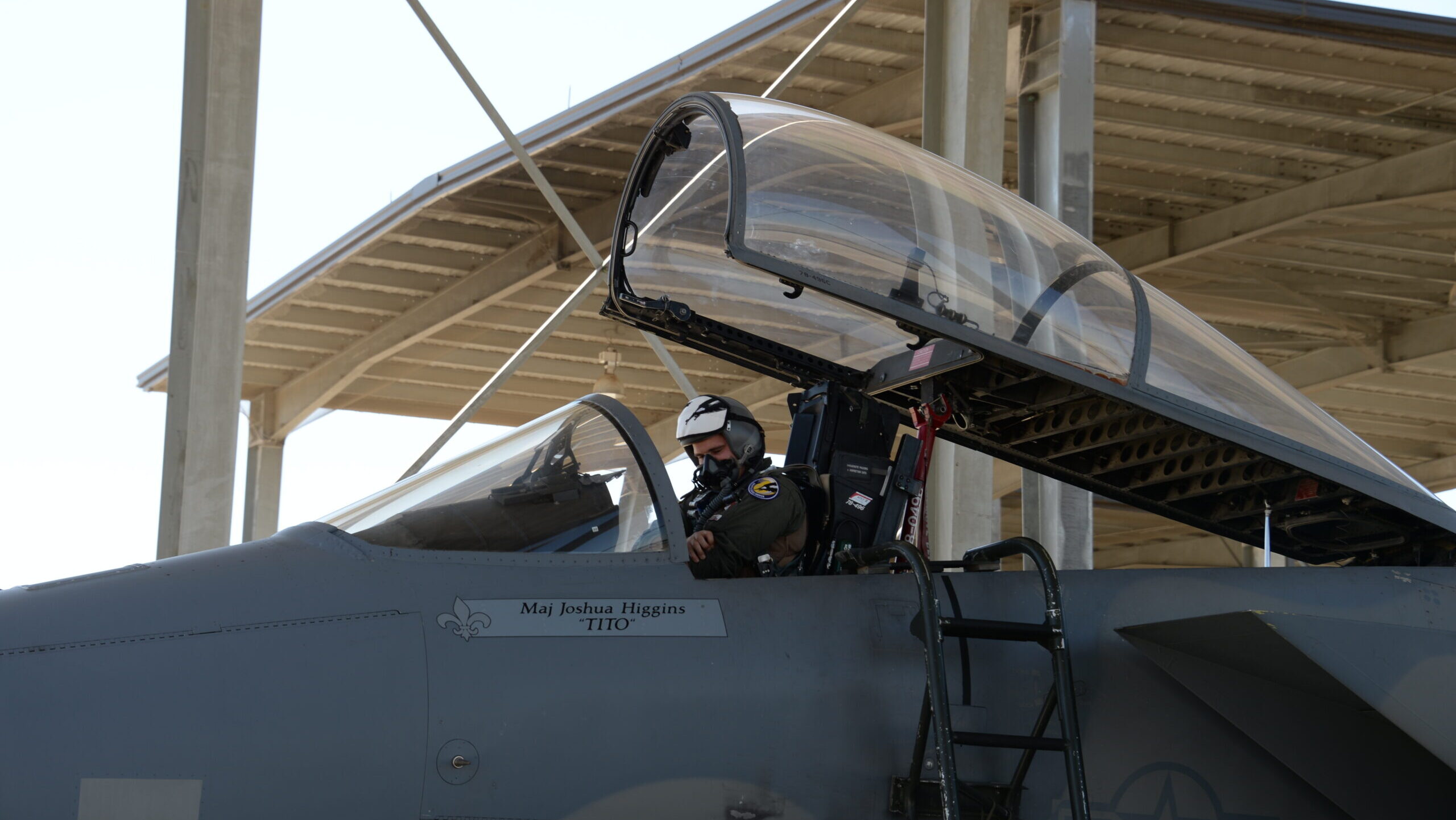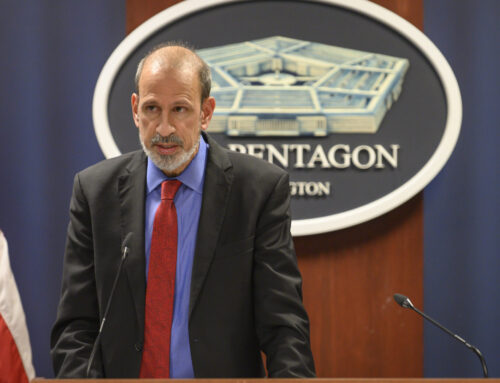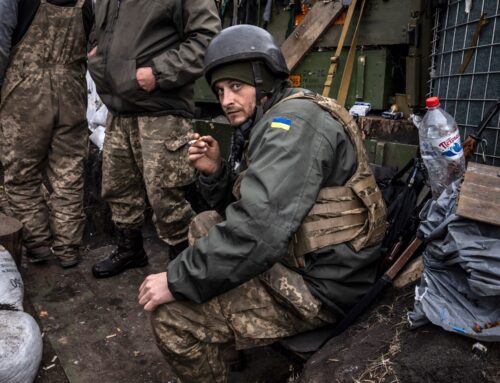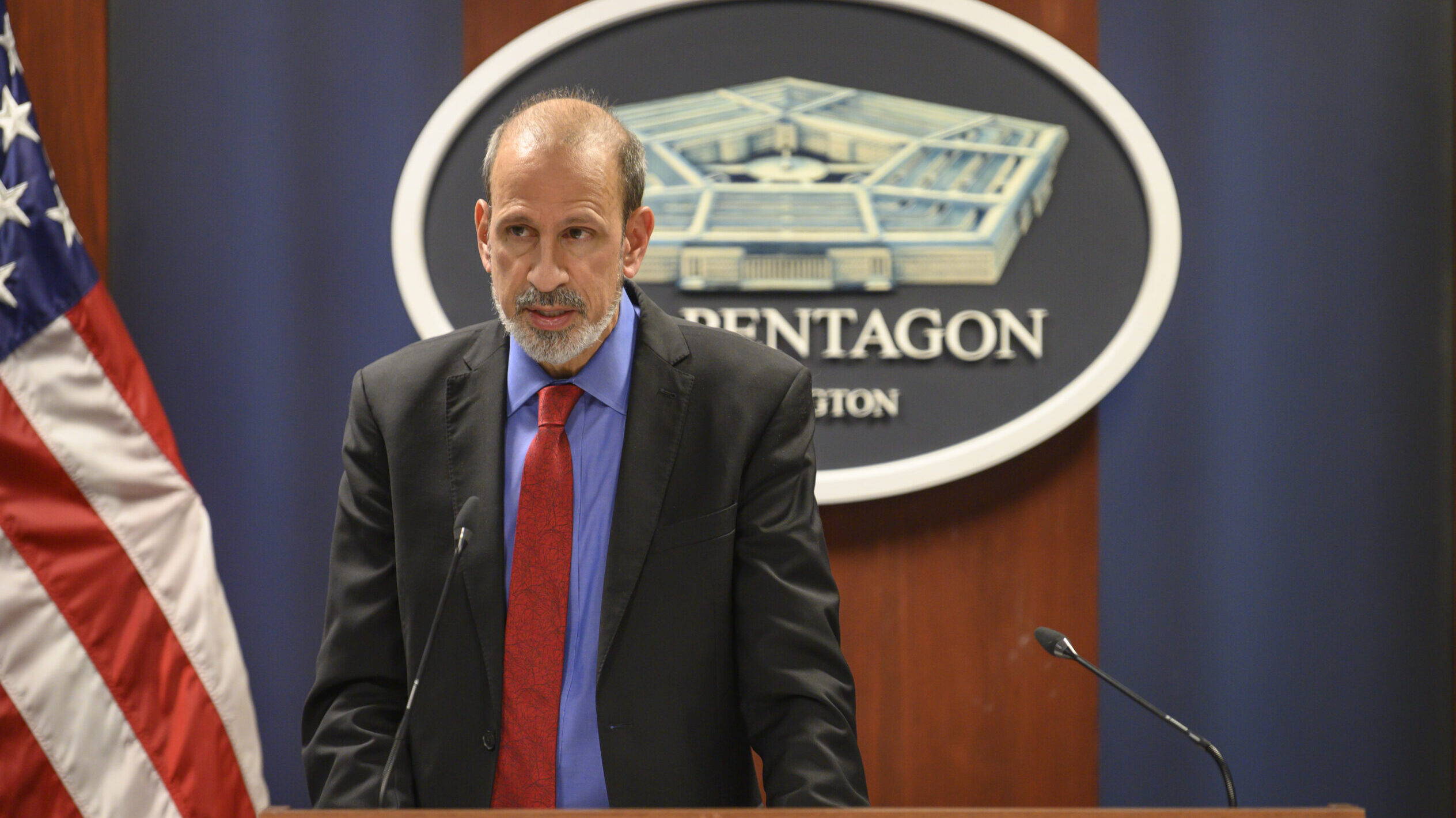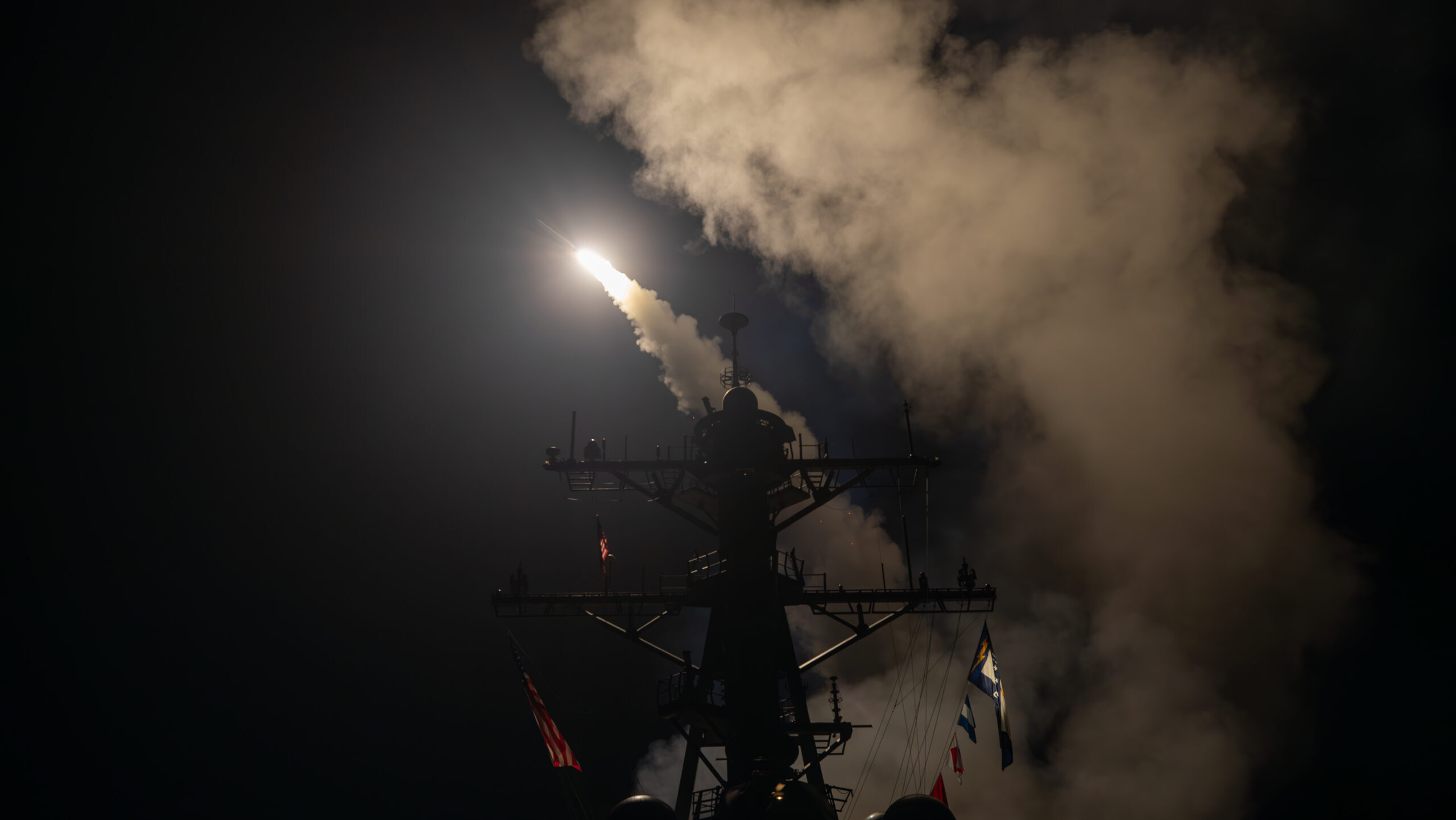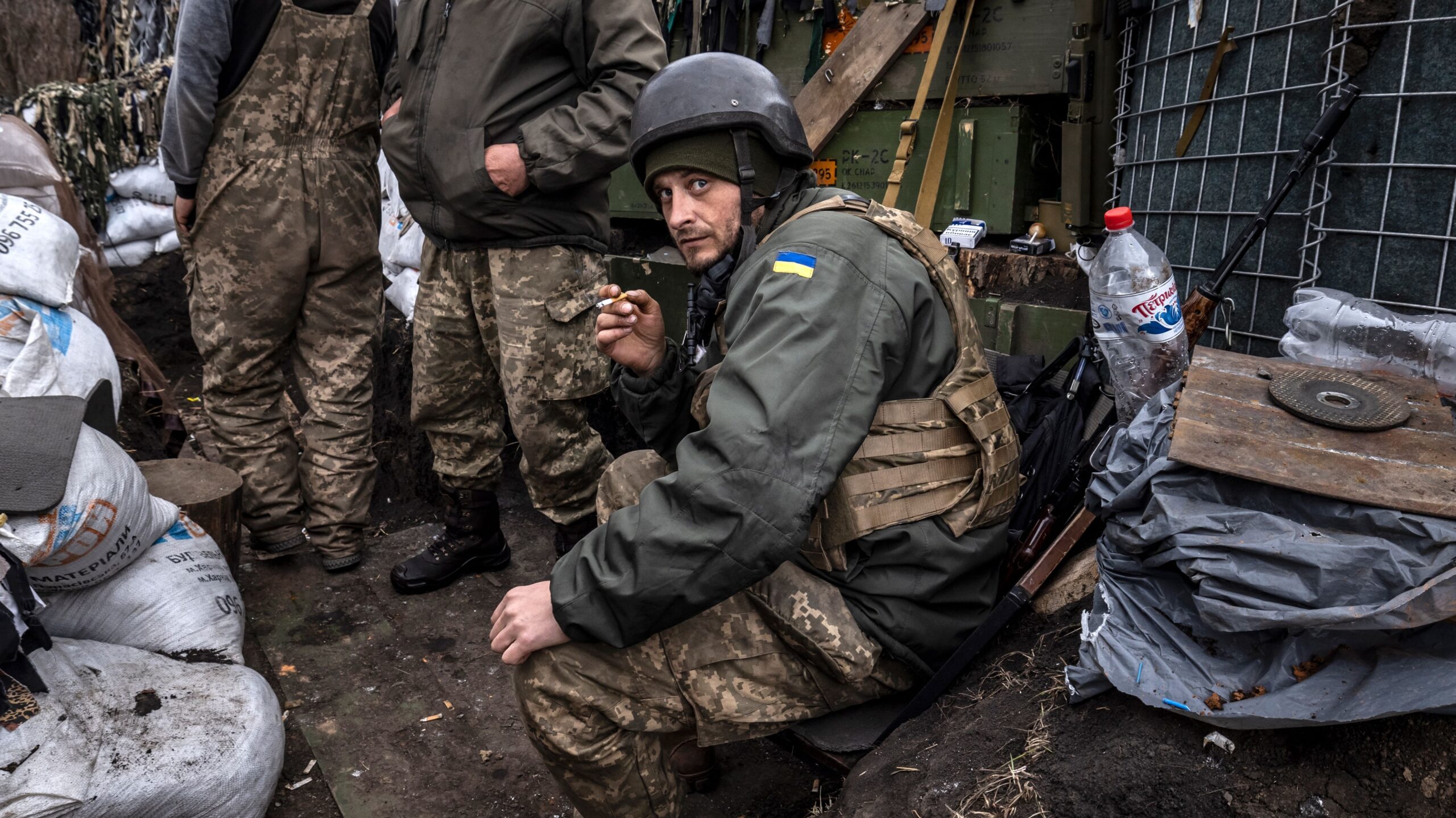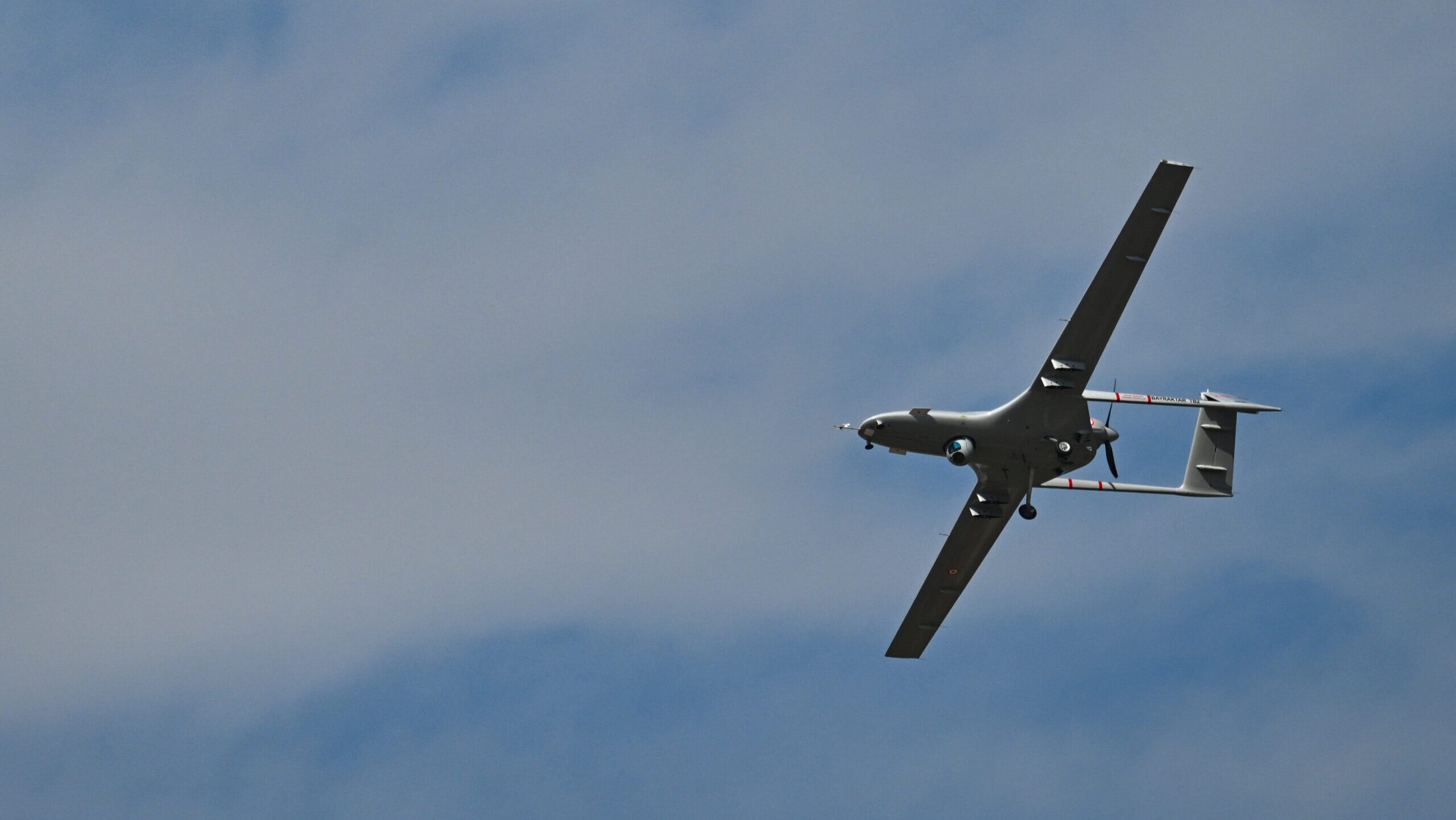During routine flying operations, 144th Fighter Wing pilots and maintainers prepare F-15 Eagles for take off from the Fresno Yosemite International Airport Aug. 14, 2019. (U.S. Air National Guard photo by Capt. Jason Sanchez)
WASHINGTON — Seated near a model of Martin-Baker’s latest ejection seat design, company executive Andrew Martin looked incredulous.
An official at rival ejection seat-maker, Collins Aerospace, had suggested that some Martin-Baker seats weren’t as safe as they should be — an unfair claim, Martin said, because it was based on outdated data.
“Why would somebody want to fearmonger?” Martin told Breaking Defense. “Why would somebody want to put out data and tell pilots, you know, things that are incorrect and give pilots pause for thought, when what they absolutely should be doing is pulling their handle? That’s the part that we find slightly irresponsible.”
Safety is, of course, the top priority for both ejection seat-makers, as their product is one that’s only intended to be used when a pilot’s life is in grave danger already.
But the comments also come as hundreds of millions of dollars are on the line amid a ticking clock: By the end of the year, the Air Force plans to complete a review of the Next Generation Ejection Seat (NGES) program, whose contract is currently held by Collins. Sometime after that, the service could decide to change its acquisition strategy, potentially shifting the rights to produce ejection seats for hundreds, if not thousands, of US aircraft.
To be clear, once the review concludes, the Air Force could still stick with its incumbent acquisition strategy, where Collins is already underway with work on the F-15E. And if the service does change its mind, that might not mean a complete switch from US-based Collins, a subsidiary of defense giant RTX, to UK-based Martin-Baker. A full competition could still lead to Collins emerging victorious, or theoretically result in some split of work between the two companies.
But any time there is even the chance to grab market share, the two members of the ejection seat duopoly know they have to go all-in, given the narrow nature of the business.
“There are certain markets that are just a natural for a small number of entrants,” JJ Gertler, an analyst at the Teal Group consultancy, said in an interview. Likening the ejection seat market to hockey resurfacing work, where Zamboni and Olympia products dominate, Gertler noted that specific aircraft tend to use the same ejection seat — a departure from other circumstances, like when different engines could power the same fighter.
“So each contract tends to be all-or-nothing for the ejection seat companies,” he said.
It’s unclear how a competition might impact the already-delayed seat plan. For each platform under the NGES effort, “the Air Force projects a 36-month integration and test program, followed by a 24-month manufacturing lead-time, followed by aircraft modifications,” the Air Force spokesperson said. Asked how a competition could impact that timeline, the spokesperson replied that “[i]nformation gathered from industry in the [August] sources sought notice will inform us on potential impacts to platform integration timelines.”
“It’s cheap leverage,” Gertler said regarding the new market research. “It’s a time-honored tactic for putting some pressure on an incumbent vendor to perform better.”
Why The Air Force Picked Collins
The story starts back in 2019, when the Air Force awarded Collins Aerospace a sole-source deal for NGES. But much has changed since then, according to the Air Force spokesperson.
First, the Air Force now wants to completely divest the A-10 Warthog — mirroring a raft of other retirements across the service — prompting officials to nix plans to put a new seat in the aircraft. And second, “significant delays” to integrate new seats in the remaining platforms under the NGES program have prompted the service to re-open the potential for a competition by launching a new round of market research in August.
When the NGES deal was awarded, the Air Force reasoned that Collins was the only company effectively able to offer a seat for the program via the firm’s ACES 5, which is separately slated to replace seats in the B-2 stealth bomber and serve as the ejection seat for Boeing’s new T-7A training jet.
At the time, Martin-Baker officials say, the Air Force told the company it was going to offer Collins a sole-source contract because Martin-Baker simply wasn’t going to meet the requirements the service sought.
“We disagreed violently” with the Air Force’s reasoning, “but we didn’t [protest] that,” Steve Roberts, the company’s head of business development, said in an interview at the Air and Space Forces Association conference in September.
Then in 2020, Martin-Baker’s US18E was picked by Lockheed Martin for foreign sales of the F-16, and the NGES effort hit delays. The latter event in particular prompted the Air Force’s recent move to once again survey industry.
The Air Force spokesperson did not comment on the exact length of the delays for NGES, but budget documents point to four years of added time for the program. Specifically, fiscal 2019 documents [PDF] projected that a qualification campaign for NGES would run until the fourth quarter of 2023, but FY25 materials [PDF] indicate qualification efforts aren’t expected to complete until the final quarter of 2027.
A Collins spokesperson disputed that timeline in an email to Breaking Defense, acknowledging that while there have been delays, “current qualification efforts[…] are not forecasted to be delayed by four years. The first qualification effort for the F-15 is expected to be completed in late Q2/early Q3 2025,” they said. The company “is standing by to support qualification for follow-on platforms, including parallel qualification efforts, to support the U.S. Air Force’s schedule,” they added.
Meanwhile, there have been some recent hiccups with NGES. The government issued a 90-day stop-work order in July, halting work underway on the F-15E “while we re-validate the acquisition strategy,” the Air Force spokesperson said. A representative for Collins subsequently told Breaking Defense that the order stopping work was lifted in October.
Asked why the Air Force lifted the stop-work order despite the ongoing NGES review, the Air Force spokesperson confirmed the order ended “[a]fter achieving alignment on contractual requirements” for the existing acquisition plan.
“The program office still projects the market research update and acquisition strategy review will conclude by the end of the year,” the spokesperson added.
The Air Force spokesperson attributed initial NGES delays to COVID-19 supply chain issues, but said more recent setbacks stem from “realized aircraft integration risks and misalignment on contractual requirements.” The service “is focused on developing a safe, reliable, and sustainable new ejection capability for the warfighter,” the spokesperson added.
Tech. Sgt. Kevin Mayo (left), the 54th Maintenance Squadron egress section assistant Non-Commissioned Officer in Charge, and Staff Sgt. Mitchell Lawhorn (right), a 54th Maintenance Squadron egress systems Craftsman, remove an ejection seat from an F-16 Fighting Falcon on March 13, 2017 at Holloman Air Force Base, N.M. (U.S. Air Force photo by Senior Airman Emily Kenney)
The delays have caught the attention of House lawmakers, who urged the Pentagon in a draft of the fiscal 2025 National Defense Authorization Act to evaluate whether the NGES acquisition strategy should be reconsidered. House authorizers additionally called out delays for a separate effort to integrate the ACES 5 in the B-2 stealth bomber.
Asked about the NGES program’s setbacks in an interview at AFA, Rob Makros, a business development executive for ejection seats at Collins, told Breaking Defense that “Safety is first and foremost” for the company.
“Anytime you have any type of concerns with the seat — not saying there were any concerns with the seat, but you have lots of issues that come up that are unforeseen — then you need to take the steps to make sure that you’re addressing them,” he continued. He added that the company has a “tailored approach” to get back on schedule.
After the F-15, the Air Force will then move to qualify seats for the F-16, F-22 and then B-1, Makros said. (All four aircraft are equipped with Collins’s legacy ACES II seat.)
The Collins spokesperson added that the Air Force has removed requirements for the F-15C/D while keeping those in place for the F-15E, and that a contract modification was signed earlier this year “to include the F-15EX as a qualified platform variant.” Looking ahead, the company is “prepared to begin work on the NGES F-16 and have the infrastructure in place to support concurrent delivery orders to maintain our customer’s schedule,” the spokesperson said.
Regarding the B-2, Makros said the seats for the stealth bomber have been manufactured, but that the planes need to enter their respective depot cycles to receive their new seats.
The Air Force spokesperson told Breaking Defense the effort that includes placing a new ejection seat in the B-2, called the B-2 Safety and Sustainment Program, received airworthiness approval in July. Installing the new seats “must be scheduled based on aircraft availability,” they added.
On Oct. 21, the Air Force announced that one B-2 bomber dubbed the “Spirit of Nebraska” had finished a planned depot stop more quickly than in previous years due to new techniques that sped up work. However, a spokesperson for the Air Force Life Cycle Management Center told Breaking Defense the B-2 in question did not receive the new ACES 5 seats.
The Collins spokesperson referred questions on airworthiness to the Air Force, but stated that the company is “on standby to support installations” for the B-2 fleet.
Heating Up
There are only so many Western planes in the world that need new ejection seats at any given time, so contract opportunities often end up as a dogfight between Collins and Martin-Baker. But the idea that Collins could suddenly have to defend its NGES work after having the deal sewn up for five years is leading the company to take a more aggressive public posture.
In an email to Breaking Defense, a spokesperson for Collins shared several stats on the company’s ACES seat, including the claim that “unlike other seats that can have ejection back injury rates as high as 40 percent” — a clear swipe at its rival — “ACES has an ejection spinal injury rate of less than 1 percent.”
Representatives for Martin-Baker, including Martin himself, disputed those characterizations, arguing that Collins was operating with outdated data for seats going back decades. Martin-Baker’s current seats for Air Force and Navy aircraft meet a standard one percent spinal injury rate, said Roberts.
“There are parameters the government will ensure called dynamic response,” Roberts said at the company’s AFA booth, where video of a series of crashes for aircraft like the F-35, which has a Martin-Baker seat, played on loop. “They make sure that the modern seats meet modern requirements.”
Reducing risk of injury to pilots is a key goal of the NGES program, which includes a focus on accommodating a wider range of body types. NGES is also intended to compensate for changes to flying missions like the proliferation of helmet mounted displays — heavy instruments sitting atop a pilot’s head that pose hazards when punching out.
Both firms say their seats have made the necessary changes to keep pace with modern demands. The two also say they’ve incorporated other design tweaks, like introducing greater modularity to ease the maintenance process. And as a potential competition looms, the seat makers are making their closing arguments.
“I see it as the Air Force doing their due diligence,” Makros said. “I am confident that ACES 5, being the gold standard and the safest on the market, is the seat for the Air Force. I believe the Air Force thinks this too,” he said.
For its part, Martin-Baker isn’t necessarily trying to unseat Collins as the sole manufacturer for NGES, Martin said. Instead, the company believes the Air Force should take a piecemeal approach at platform integration, opening up the opportunity for both firms to play a role in NGES.
“There’s no frustration. There’s no animosity. We’re all in the life-saving business,” Martin said. “And I think our message to the Air Force has been, it doesn’t have to be winner-takes-all.”
But the stakes are higher for Martin-Baker than Collins, Gertler observed. For its part, Collins has a diversified portfolio that includes other products like avionics, and is a division of a much larger aerospace company. Martin-Baker, on the other hand, is a “pure play ejection seat company,” meaning new ejection seat work is relatively more important.
“So in a way, a new contract for Collins is a very-nice-to-have. A new contract for Martin-Baker is a must-have,” he said.


